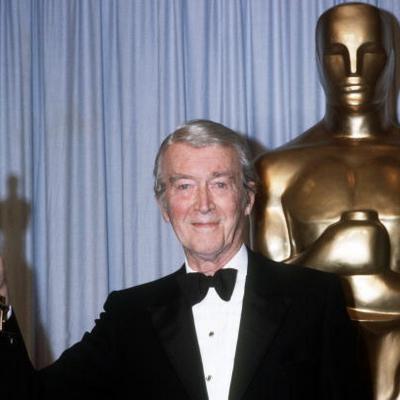James Stewart at a Glance
- Categories: Celebrities > Actors, Celebrities
- Net Worth: $30 Million
- Birthdate: May 20, 1908 - Jul 2, 1997 (89 years old)
- Birthplace: Indiana
- Gender: Male
- Profession: Actor, Pilot, Military Officer, Television Director
- Nationality: United States of America
- Height: 6 ft 3 in (1.91 m)
What Was James Stewart’s Net Worth? A Look at the Life and Legacy of a Hollywood Icon
James Stewart, a name synonymous with the Golden Age of Hollywood, captivated audiences with his unique charm and everyman persona. But beyond his acting prowess, Stewart led a remarkable life, marked by military service, personal relationships, and a lasting impact on the film industry. This article delves into the life and career of James Stewart, exploring his net worth at the time of his death and the multifaceted journey that shaped his enduring legacy.
Early Life and Education
Born on May 20, 1908, in Indiana, Pennsylvania, James Maitland Stewart was the eldest of three children. Growing up in a Presbyterian household, he was expected to follow in his father’s footsteps and take over the family hardware store. However, Stewart harbored different ambitions. As a child, he was fascinated by aviation. He received his early education at the Wilson Model School, where he was a somewhat inattentive student, preferring to daydream. He then attended Mercersburg Academy, actively participating in the track and field team, contributing to the school yearbook, and singing in the glee club. These early experiences hint at the multifaceted talent that would later define his acting career.
Following family tradition, Stewart enrolled at Princeton University, where he initially pursued a degree in architecture. His interests extended beyond academics; he became involved in the drama and music clubs, foreshadowing his eventual career path. After graduating in 1932, Stewart made a pivotal decision, declining an architecture scholarship for graduate school to join the University Players, an intercollegiate summer stock company. This move marked the definitive shift towards his professional acting career.
Career Beginnings on Stage
In 1932, Stewart took his first steps into the professional acting world, making his Broadway debut in the play “Carry Nation.” He quickly followed this with a role in the comedy “Goodbye Again.” These early stage appearances were instrumental in honing his skills and gaining the attention of the industry. He continued to appear in various plays, including “Spring in Autumn,” “All Good Americans,” “Yellow Jack,” “Divided by Three,” and “Page Miss Glory.” These experiences built a strong foundation that would serve him well as he transitioned to the world of cinema.
Film Career in the Golden Age of Hollywood
Stewart’s film career began in 1935 when he signed a seven-year contract with MGM. He made his debut with a small role in “The Murder Man,” starring Spencer Tracy. Minor roles in “Rose Marie,” “Next Time We Love,” and “Small Town Girl” helped him gain experience. 1937 proved to be a significant year, with starring roles in the remake of “Seventh Heaven” and the drama “Navy Blue and Gold.”
His career trajectory took a major leap in 1938 with the release of George Stevens’ “Vivacious Lady” and Frank Capra’s “You Can’t Take It With You.” The latter won the Academy Award for Best Picture, and catapulted Stewart into major Hollywood stardom. He then reunited with Capra in 1939 for “Mr. Smith Goes to Washington,” earning his first Academy Award nomination for Best Actor. The same year, he starred opposite Marlene Dietrich in the Western comedy “Destry Rides Again.” These roles showcased his versatility, establishing him as one of Hollywood’s most sought-after leading men.
The 1940s proved pivotal. He starred in the screwball comedies “The Shop Around the Corner” and “The Philadelphia Story.” His role in the latter earned him his only Academy Award. Before enlisting in the US Army Air Forces, Stewart also starred in “Come Live with Me,” “Pot o’ Gold,” and “Ziegfeld Girl.”
After returning from military service, Stewart played George Bailey in Capra’s “It’s a Wonderful Life,” arguably his most iconic role. Despite its initial moderate commercial success, the film became a classic and earned him an Oscar nomination. He then starred in Alfred Hitchcock’s “Rope” (1948) and “The Stratton Story” (1949).
Post-War Success and Westerns
The 1950s marked a career resurgence for Stewart, especially as a star of Westerns. His collaborations with director Anthony Mann were particularly fruitful, resulting in classics like “Winchester ’73,” “Bend of the River,” “The Naked Spur,” “The Far Country,” and “The Man from Laramie.” He also starred in Mann’s “Thunder Bay,” “The Glenn Miller Story,” and “Strategic Air Command.”
Stewart’s partnership with Alfred Hitchcock continued in the 50s, starring in “Rear Window,” “The Man Who Knew Too Much,” and “Vertigo.” Other notable films include “Harvey” and “Anatomy of a Murder,” earning him Oscar nominations, and “The Greatest Show on Earth,” which won Best Picture, and “The Spirit of St. Louis,” in which he portrayed his childhood hero Charles Lindbergh. Despite some box-office disappointments like “Bell, Book and Candle” and “The FBI Story,” this decade became his most commercially successful.
Later Career and Television Ventures
In the early 1960s, Stewart teamed up with director John Ford, starring in Westerns “Two Rode Together,” “The Man Who Shot Liberty Valance,” and “Cheyenne Autumn.” He also participated in the all-star cast of “How the West Was Won.” His other notable credits during the decade include family-friendly comedies like “Mr. Hobbs Takes a Vacation,” “Take Her, She’s Mine,” and “Dear Brigitte,” as well as the Civil War drama “Shenandoah,” the survival drama “The Flight of the Phoenix,” and Westerns such as “The Rare Breed” and “Bandolero!”
Stewart’s film appearances decreased in the 1970s, with roles in “Fools’ Parade,” “The Shootist,” and “Airport ’77.” His final live-action feature film role was in the Japanese film “The Green Horizon” in 1980. His last overall role was in the 1991 animated film “An American Tail: Fievel Goes West,” where he voiced Sheriff Wylie Burp.

